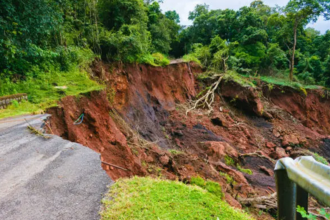With Russian military losses reaching amazing figures, 2024 has turned out to be one of the worst years for Russian forces in the continuous war in Ukraine. At least 45,287 troops were recorded dead by the end of the year, a loss roughly three times more than in the first year of the invasion. This increase in deaths emphasizes the great damage the war is causing to Russia’s military. The growing death toll raises issues regarding the viability of Russia’s military approach and emphasizes the human cost of this war. We shall investigate the main causes of these Russian military losses, the important battles that have resulted in these losses, and the wider consequences of these losses for Russia’s war activities on this site.
Why Do Russian Military Casualties in 2024 Show Such an Increase?
Russian military losses climbed sharply in 2024. Unlike past years when the casualties varied during fierce conflicts over crucial areas, 2024 saw a steady increase in deaths. This steady rise in casualties reflects various elements, notably the strategy used by Russian forces and the protracted character of the fighting.
The change in strategy is a major determinant of the rising Russian military mortality. Russia’s army has been depending more and more on cautious, gradual advances than on forceful, high-intensity operations. Russian troops are fighting constantly as the front lines move slowly, sometimes with great losses, despite little territory acquired. Soldiers exposed to continuous artillery bombardments and trench warfare as a result of this tactical shift run a higher death and injury.
Furthermore, the challenge of safeguarding important sites in Ukraine has resulted in fierce, grinding conflict with great losses. Russian troops have been left open to Ukrainian counterattacks by these protracted conflicts, and even small skirmishes cause major losses. Particularly, the conflicts for places like Bakhmut, Avdiivka, and Robotyne have caused significant losses for Russian forces, which fuels the increasing trend in Russian military casualties all year long.
Which Wars Most Affected Russian Military Casualties?
For the Russian military, several major engagements in 2024 have been exceptionally expensive. On February 20, one of the most terrible days happened when Ukrainian HIMARS missiles struck a Russian training area close to Volnovakha, Donetsk, killing at least 65 Russian soldiers, including their leader. Easy targets for the attack, the soldiers had been directed to line up for a medal ceremony. This event fit a larger pattern of significant losses arising from direct attacks on exposed Russian positions.
The Russian army has sustained major casualties in several important sites over the year. For Russian troops throughout 2024, the struggle for Bakhmut, which had already claimed thousands of lives in 202, continued to be a lethal theater of conflict. High deaths have also come from the conflict for Avdiivka, when Russian forces tried to breach Ukrainian positions, and the war for Robotyne, where both sides engaged in savage close-quarters fighting. Reports state that Russia lost more than 37,000 men in 2023, most of whom fell around these vital places.
Russian armies pushed gently in the eastern area, seizing 2,356 square kilometers of Ukrainian land from September to November 2024. Notwithstanding these advances, they lost at least 11,000 deaths, highlighting the great cost of keeping a military presence in these disputed areas. These figures show how directly Russian military losses have been linked to these protracted operations, in which case, the death toll exceeds the strategic value.
How might volunteers and recruits help to explain rising Russian military casualties?
Rising Russian military casualties in 2024 have mostly resulted from growing reliance on volunteers and conscripts filling the ranks. Russia has turned to enlisting troops via a mix of financial incentives and legal gaps in an attempt to restore its decimated army. Many recruiters come from rural areas, where the promised pay appeals because of high unemployment rates and poverty.
Most of these recruits, meanwhile, have little military background or training. Many troops are dispatched to the front lines with little preparation, just ten to fourteen days after signing their contracts. Particularly among fresh recruits, this lack of knowledge and experience has resulted in greater fatality rates. Consequently, the hurried deployment is costing volunteer troops, who today account for a sizable fraction of the Russian military losses, money. Often outmatched by Ukrainian soldiers, who have gained from improved training, gear, and fighting experience, they
Many times, these recruits join the military to escape criminal prosecution or to find a consistent income, but their lack of preparedness makes them more susceptible in fighting environments. The terrible nature of the battle, combined with inexperienced troops, has greatly added to the continuous rise in Russian military losses in 2024. Read another article on the Ukraine-Russia War
In what way is Russia handling its military losses and recruitment campaigns?
Russia has kept trying to rebuild its forces through recruitment operations, even with the increasing military losses there. With combat pay sometimes reaching five to seven times the normal salary in certain places, the Russian government has raised its financial incentives for soldiers who sign contracts. Russia has been able to attract fresh troops into the military thanks in part to this financial attractiveness; yet, many still struggle with minimal training.
Although some of the staffing shortages have been lessened by the rise in recruiting, it has little effect on the underlying reasons for the high mortality rates. Given little preparation and fast deployment, these recruits are unprepared for the complexity of contemporary warfare. The great turnover and constant influx of recruits without enough preparedness feed a vicious circle of high fatalities, aggravating the toll the conflict is having on the Russian military.
Furthermore, the success of Russia’s approach is undeniable, as its army is suffering great losses. Together with young soldiers’ lack of experience, the death toll compromises Russia’s military overall efficiency. Notwithstanding efforts to rebuild its forces, the increasing Russian military losses point to Russia having a long-term fight to keep its military capability and fulfill its goals in Ukraine.
For Russia's military in 2024 and beyond, what promises to be?
The dismal picture of the continuous struggle presented by the Russian military casualties in 2024 is painted. Russia’s military is under great pressur,e given ongoing significant losses in important locations including Avdiivka and Bakhmut. The slow, grinding character of the conflict has led to protracted engagements with great human cost on both sides.
Looking ahead, Russia will probably have more challenges keeping up its military activities. Russia’s manpower and resources will continue to be strained by the rising Russian military casualties, which will make long-term military operations more difficult. Russia will have to rethink its policies and approaches while the war lasts in order to minimize more losses and try to reach its goals.
The reliance on poorly qualified recruits and the increasing mortality toll point to the possible unsustainable nature of the present strategy. Russia might have to change its military approach to prevent more Russian military casualties, either by using improved soldier training and preparation or by negotiating a negotiated peace to the conflict. Certainly, the effects of these losses will shape Russia’s military and political environment for years to come.
In summary
The Russian military losses in 2024 draw attention to the human cost of the conflict in Ukraine, highlighting the great difficulties Russia’s armed forces face. Russia’s military is in a dilemma in terms of personnel and morale as it suffers major losses on several fronts and depends more on inexperienced recruits. These losses indicate not only the terrible character of the fight but also the effect of strategic choices taken without the expected results.
Russia will have to find a way to modify its strategy to stop more military losses while it deals with the fallout from recent losses. The way the Russian military manages its resources, maintains its forces, and changes strategy to lower the great human cost of this conflict will determine its destiny. The effects of these losses will surely be long-term for the Russian military as well as for the geopolitical scene.








